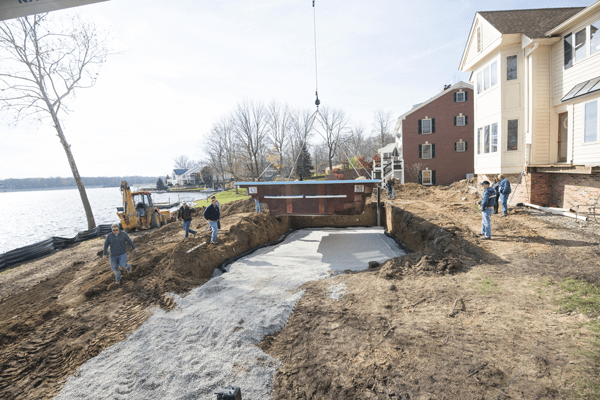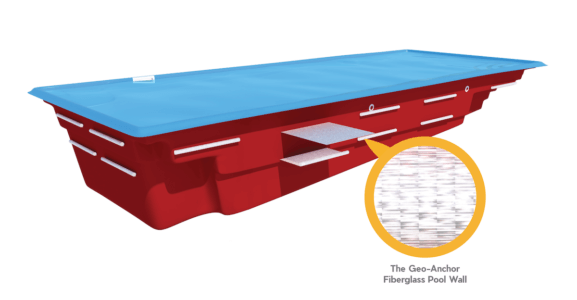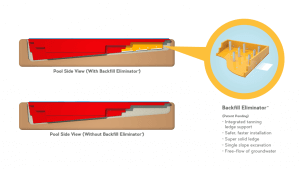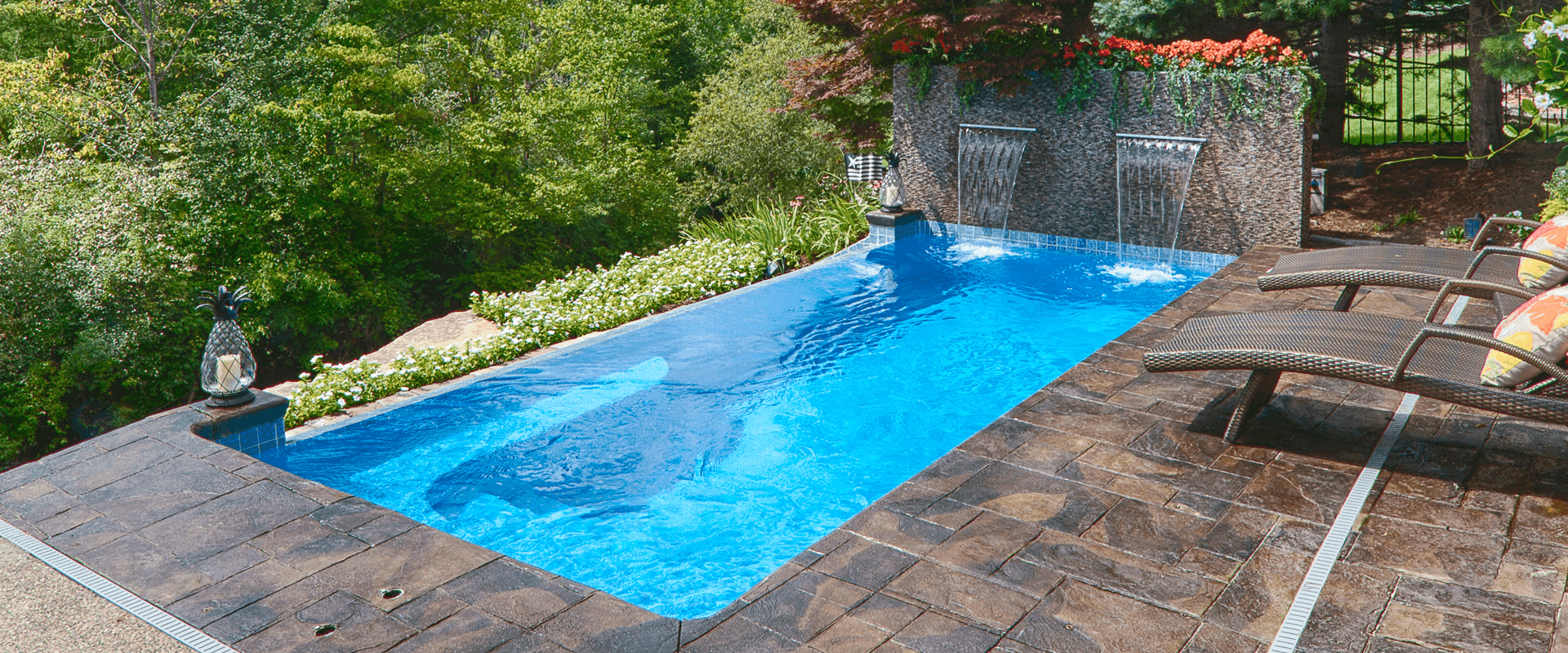877-929-7665
How Geography Can Impact Your Fiberglass Pool Installation

When you make a significant purchase, it’s nice to have reassurance it’s in the best position to last for a long time. You want to be sure builders have your house on a solid foundation. The same goes for your pool. Among other factors, it’s important to understand how geography can impact your inground pool installation. The soil types and conditions in your backyard may make the pool installer’s job a breeze—or a big challenge. For homeowners, that means your overall fiberglass pool installation costs and timelines may vary. Let’s “dig in” and explore some common soil issues your pool builders may encounter during excavation.
Rock
Rock is notorious for causing problems early in the installation process. Underground rock, such as limestone, is more prevalent in some areas and can impact your inground pool installation. Excavating rock often requires specialized equipment to break the stone into manageable pieces so workers can remove and haul it away. Many swimming pool installation contracts include a “rock clause,” so carefully read the agreement with your local builder. Rock clauses usually state that the homeowner must pay to remove rocks from the project site.
Clay
Soils with a substantial clay content are “expansive soils,” meaning they have a high capacity to absorb moisture and can swell or contract based on how much moisture is in the ground. Clay-rich soils often cause basement leaks or home foundation problems. Too much clay in the soil surrounding your pool may increase the likelihood of higher groundwater pressure under the pool shell, possibly causing significant damage.
Sand
If your soil is sandy, pool installers should amend the soil to include some sturdier fill dirt. Sand tends to shift, and shifting soil under your pool will not provide a sufficient support system. Sand that liquifies outside a pool can upset the balance between the water inside and outside the pool. The liquified sand is heavier and can cause a bulge. The installer can eliminate these problems by amending the soil and using the appropriate backfill material.
Groundwater
It’s critical that your builder accounts for the groundwater table in your area and drainage options in your yard. High water tables can create hydrostatic pressure in the earth around your pool. Builders may need to reroute downspouts or find other drainage solutions to move groundwater away from the shell while maintaining the water level within the pool to prevent damage.
Patented Solutions
Will soil type and ground conditions impact the style or design of the pool you have your heart set on? Fortunately for homeowners with less-than-ideal soil, it doesn’t have to be a limiting factor! Many innovations within the fiberglass pool industry can help anchor your pool to the earth and give you peace of mind that your pool will last for decades of priceless memories, such as Thursday Pools’ Geo-Anchoring Pool Wall® System and the Backfill Eliminator®.

The Geo-Anchoring Pool Wall® helps secure fiberglass pools during installation and protects the shell against groundwater pressure. The system is revolutionary for installers by providing a solution that prevents wall movement or bulging. Thursday Pools infuses a specially formulated geotextile material into the pool wall during manufacturing. During installation, this material is rolled out into the backfill and covered, thus anchoring the pool to the earth. As a result, the fiberglass pool walls will resist movement or bulging.

The Backfill Eliminator® is another innovative installation technology that works with the Geo-Anchoring Pool Wall® for pools with built-in tanning ledges. The Backfill Eliminator® encases the tanning ledge on the pool’s underside, permitting free groundwater flow and providing access to plumbing and wiring. Most importantly, the Backfill Eliminator® provides lifetime structural support to the tanning ledge and one continuous slope for excavation, making installation more convenient.
The Bottom Line
A local pool builder should be familiar with the soil types in your area and can give you a good idea of what you might be up against even before they begin to dig. Be sure to ask about any additional costs that might crop up once the builder has had a chance to assess your soil and incorporate those into your pool finance budget as contingencies, just in case. If your project is a more straightforward dig, you can use that money for fun items like ledge loungers or other add-ons such as a water feature or specialty lighting.
Learn more about the soil conditions in your region and discuss your design possibilities with a local expert. Connect with an independent dealer near you today.
